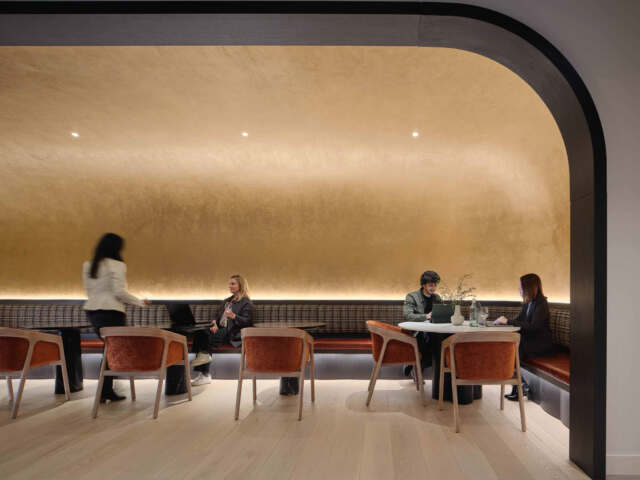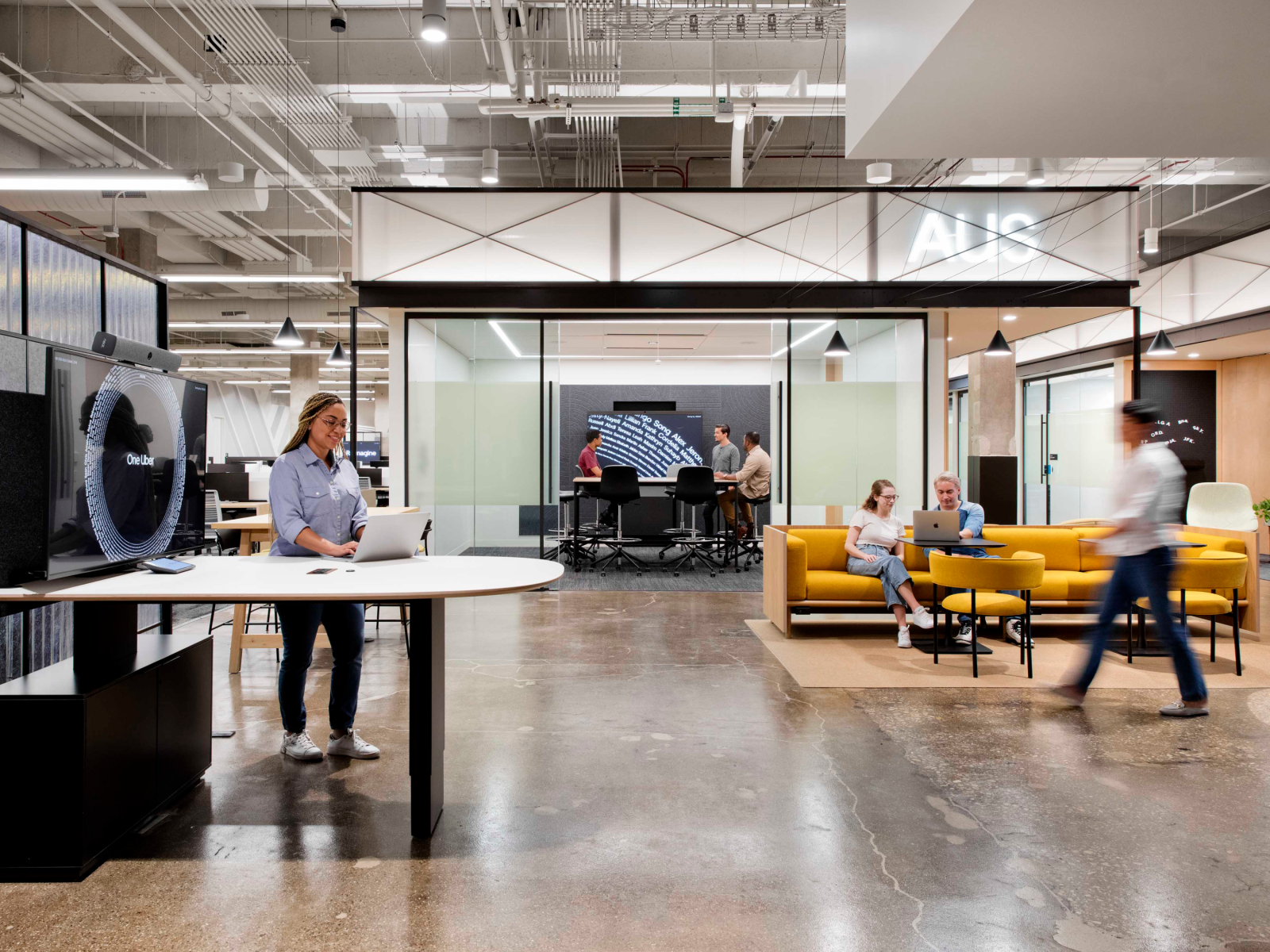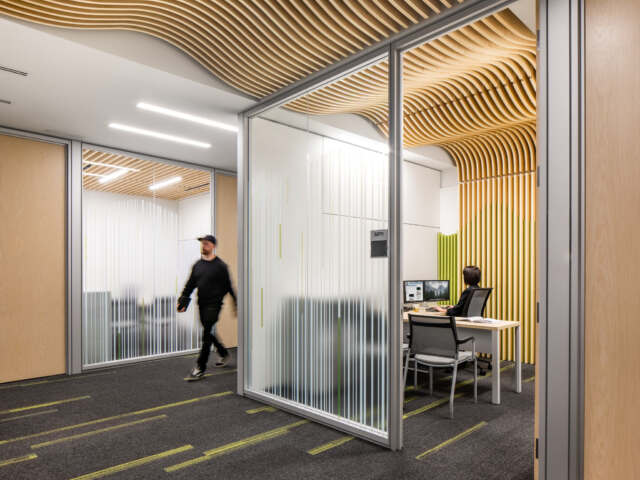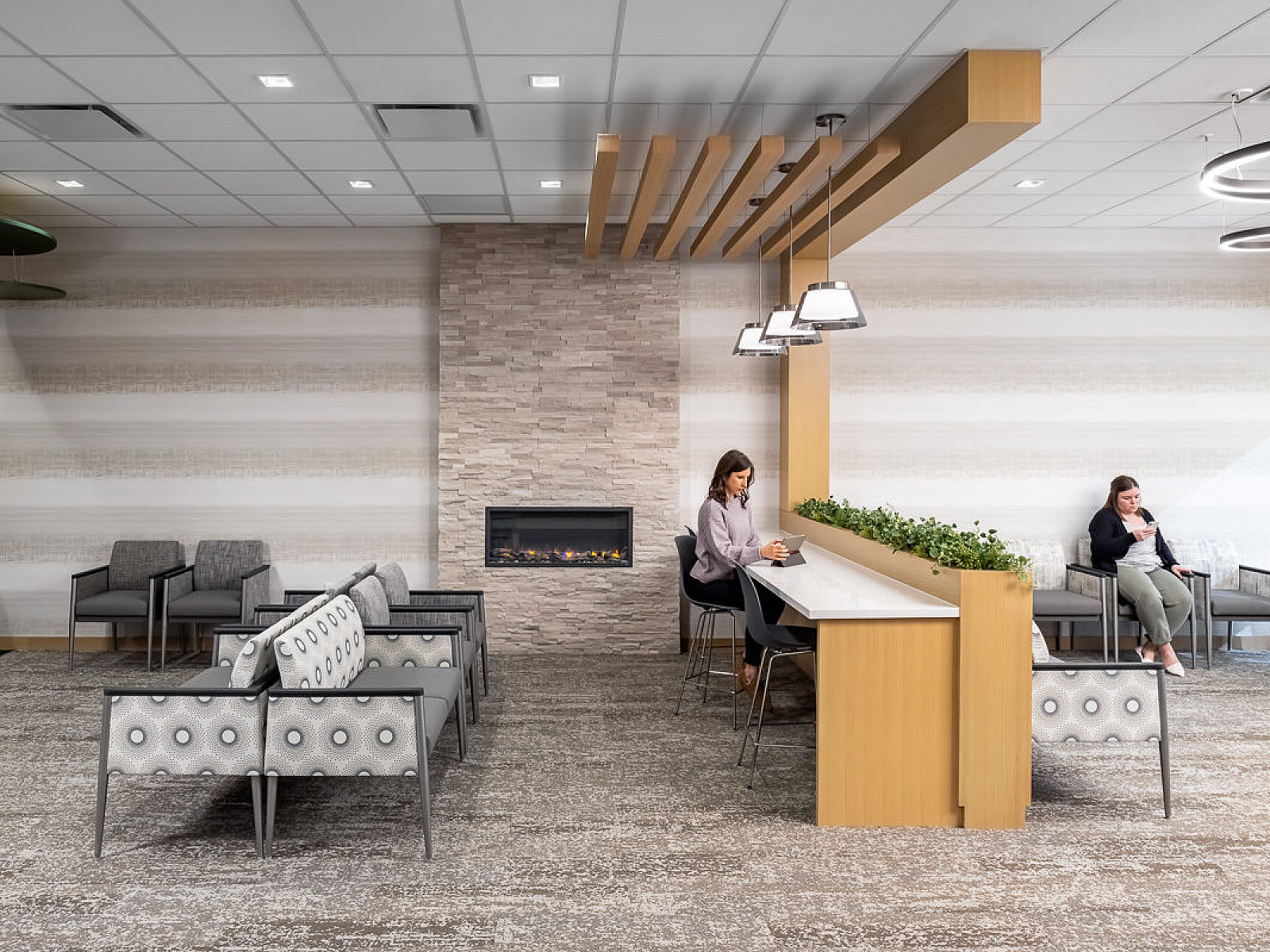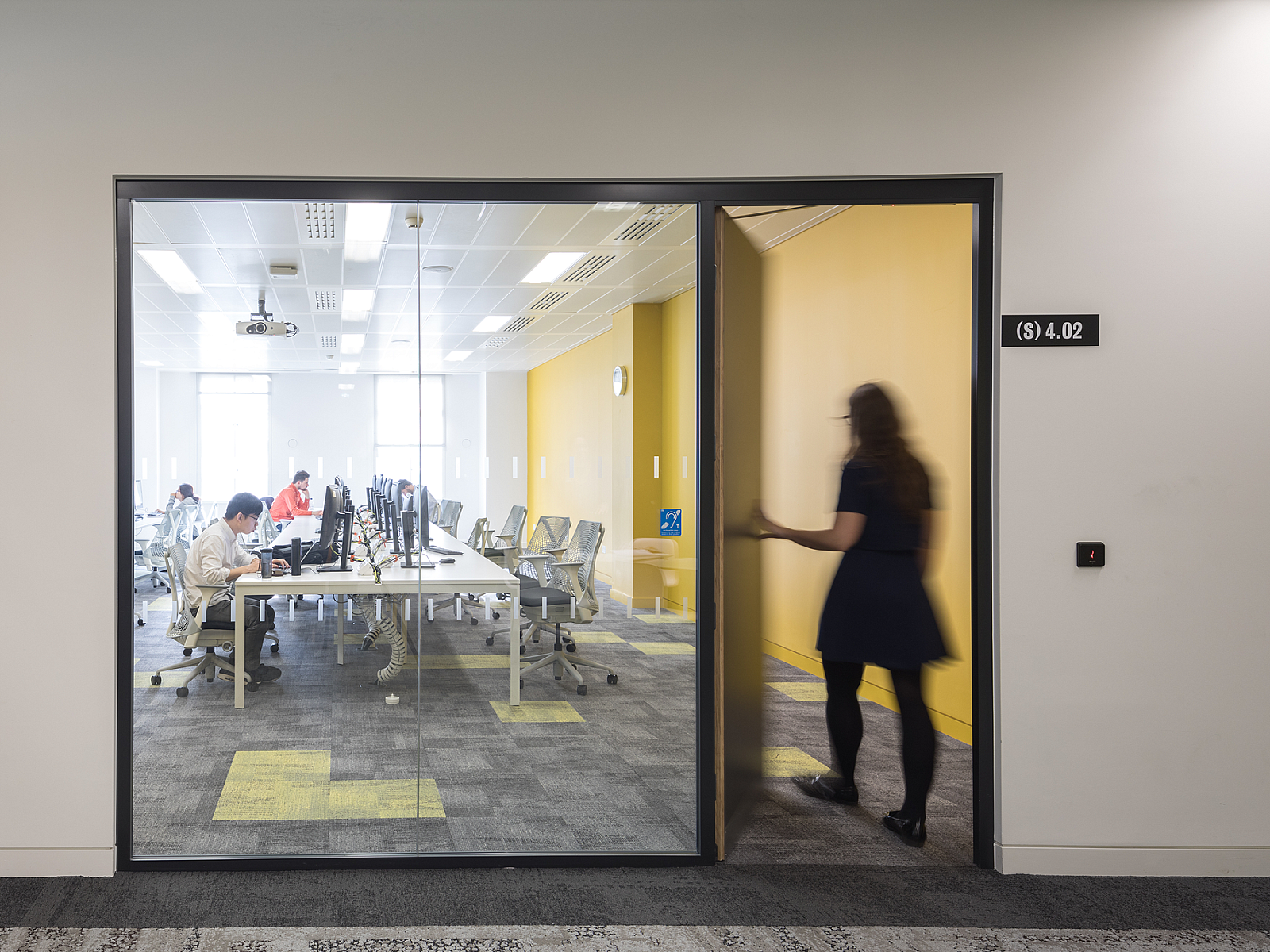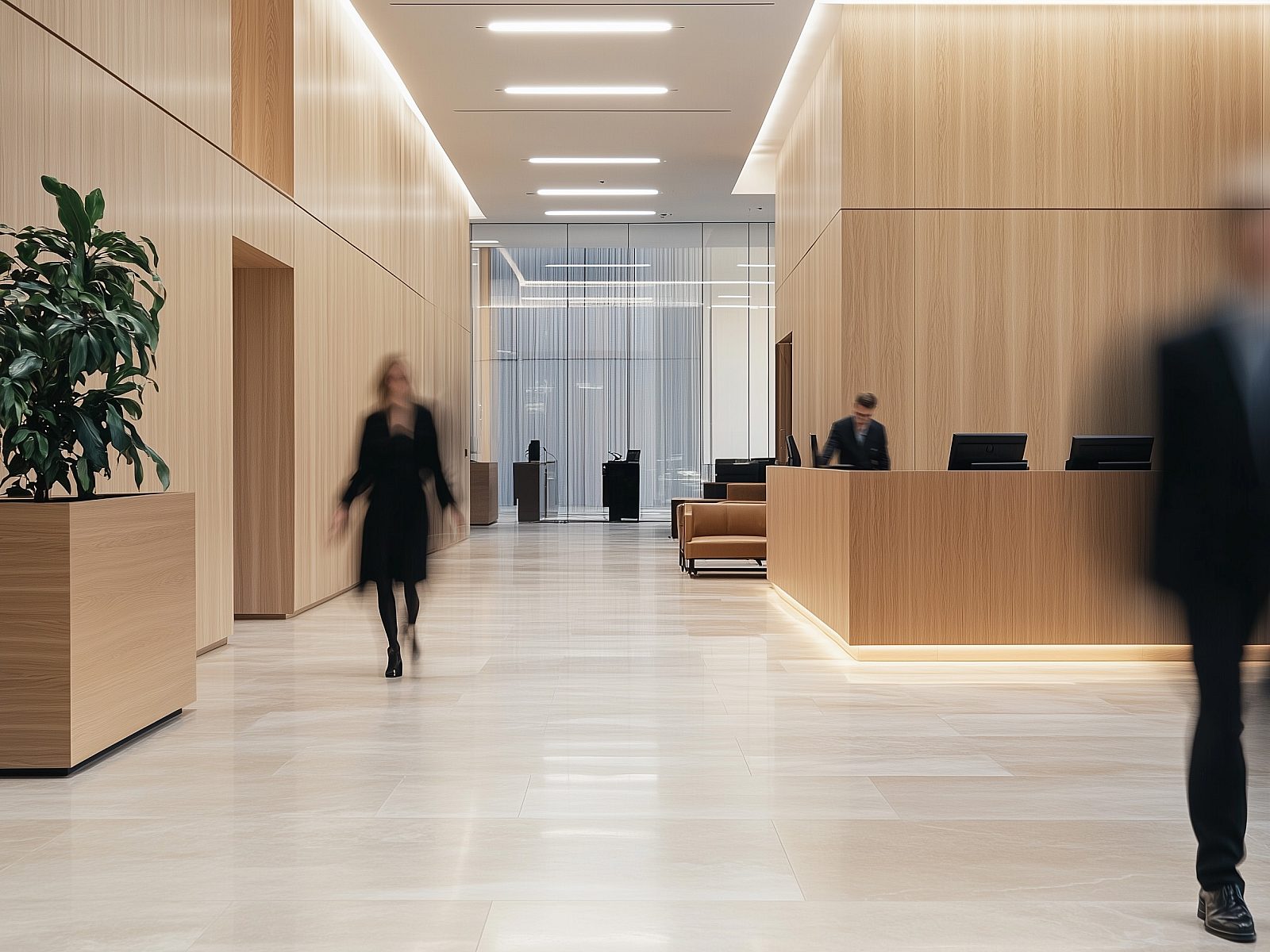The Power of Circular Design
A renovation fueled by reuse.

Instead of relocating their headquarters when a refresh was required, United Airlines chose to stay and invest in the existing space. Not only did the company desire a dynamically renewed office that would compel productivity, they also sought to reuse as many materials as possible during the process, both to save money and reduce environmental impact.
Continua Interiors collaborated with IA Interior Architects and ID8 to create a headquarters that truly lives up to United Airlines’ sustainability goals, earning a 2025 Metropolis Magazine Sustainability Award for Best Embodied Carbon Reduction.
Embodied Carbon, Explained
From individuals to corporations, lowering one’s carbon footprint is a major concern in today’s world. But how does a carbon footprint differ from metrics like operational carbon and embodied carbon? And how do all these factors play into the considerations of a sustainable design strategy?
Embodied carbon refers specifically to greenhouse gas emissions arising from the full life cycle of a product – not only the energy used to operate it. These emissions can be caused by the creation of the product, but also by its eventual end-of-life processes. Luckily, there’s a way to reduce this environmental strain: circular design.

Going Full Circle
Circular design, also known as circularity or circular economy, is a system where materials never become waste and, ideally, even regenerate to some extent, such as through recycling.
This cycle interrupts today’s “all-new culture” by presenting a model that considers the holistic life of a product, from its creation to its retirement.

Bringing Circular Design to United HQ
The expansive United Airlines Headquarters renovation spanned 13 floors and called for a high level of resourcefulness. Continua Interiors worked with IA Interior Architects and ID8 to devise a circular design strategy consisting of massive reuse initiatives, including repurposing over 10,000 lineal feet of interior workstation partitions and 380,000 square feet of Armstrong Ultima and Suprafine ceiling grid. Ultimately, our teams created 2,254 workstations, 401 file cabinets, 66 conference tables and 25 executive desks, all from reclaimed materials such as metal panel frames and textile-faced panel tiles.


During the process, 194 tons of furniture were diverted from landfills through a variety of methods, including reuse at other sites, donation, storage and recycling. Additionally, over 200 tons of metal, such as tower storage units, were recycled. These actions and more resulted in immense reduction of embodied carbon – sometimes up to 78%, as was the case with the 103 tons of carpet sent through Shaw’s take-back program.


Soaring Past Expectations
This renovation did more than heighten sustainability - the new space is streamlined for daily employee life, with elevated functionality and a comfortable, open workplan.
The design teams’ hybrid approach succeeded in both reducing furniture costs and breathing new life into the space.
This renovation process demonstrated a genuine commitment to sustainable design from the world’s largest airline. By opting for a circular design approach, United Airlines set the standard for modern renovations, proving the possibility of a truly ergonomic, highly functional and fully-equipped workplace that goes above and beyond sustainability expectations.






